0x000000BE/Attempted Write to Readonly Memory Windows 11/10/7
About Bug Check 0xBE: ATTEMPTED_WRITE_TO_READONLY_MEMORY
Blue screen errors are not new to many Windows users. When a BSOD occurs, the system stops functioning and often displays a message to describe the error. Now, perhaps you are plagued by the BSOD error: attempted to write to readonly memory.
According to Microsoft, if a driver attempts to write to a read-only memory segment, you end up with this error.
On Windows 11 or 10, a blue screen displays the message “Your PC ran into a problem and needs to restart”, followed by the stop code “ATTEMPTED_WRITE_TO_READONLY_MEMORY”. Sometimes, you notice additional information, such as the name of the driver that caused the error.
If you still use Windows 7, a blue screen offers the following text:
“An attempt was made to write to read-only memory.
STOP: 0x000000BE (0x0000000000, 0x0000000000)”.
Causes of the BSOD Error
Why does 0x000000BE/attempted to write to readonly memory occur? Several potential reasons can trigger the blue screen error, such as faulty or outdated device drivers, incompatible firmware, failing RAM, and more.
- Issues with device drivers: A primary cause is a device driver. It may be outdated, corrupted, or incompatible with the Windows OS, leading the system to write to read-only memory.
- Corrupted system files: Windows system files may be damaged or corrupted, resulting in the BSOD issue.
- Outdated operating system: The old system may have bugs that cause device drivers to access memory incorrectly.
- Incompatible software or firmware: Recently installed apps or outdated firmware may interfere with the operating system, causing the blue screen error.
- RAM issues: In rare cases, the computer’s physical memory (RAM) may go wrong, giving rise to stop code attempted write to readonly memory.
How to Fix Attempted Write to Readonly Memory
It is frustrating to encounter the blue screen in Windows 11/10/7. Fortunately, you can effectively address it with some solutions, such as updating drivers, running a memory diagnostic tool, uninstalling recent software, etc.
Boot Windows to Safe Mode for Troubleshooting
The computer may be able to access the desktop. In this case, it is easy to perform the following troubleshooting steps. However, if it fails to boot normally, how can you fix the stop code? Just boot the machine to Safe Mode and take measures to solve your issue.
In Windows 11/10:
1. Prepare installation media and boot the system from the bootable USB drive or disc.
2. Click Repair your computer to enter Windows Recovery Environment (WinRE).
3. Go to Troubleshoot > Advanced options > Startup Settings > Restart.
4. Press F4 or F5 to enable Safe Mode or Safe Mode with Networking.
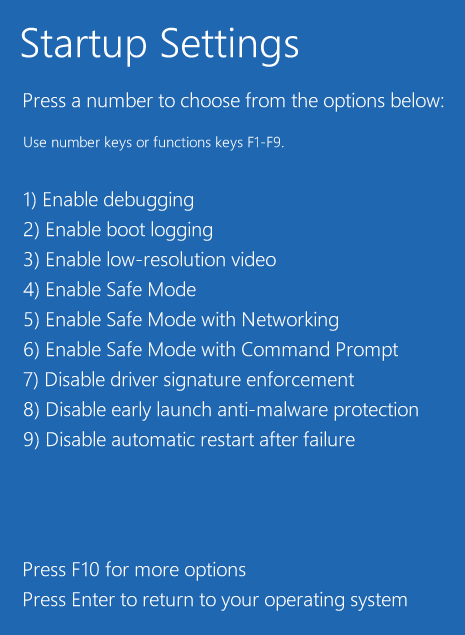
In Windows 7:
1. Press F8 when restarting the system to enter the Advanced Boot Options window.
2. Highlight your choice, like Safe Mode with Networking.
3. Press Enter.
Next, we will walk you through how to fix attempted write to readonly memory/0x000000BE in Windows 11/10/7.
Update, Rollback, or Uninstall Driver
As stated above, a problematic driver can be the main culprit of the BSOD error. Sometimes, the screen lists the name of the driver responsible for attempted_write_to_readonly_memory.
In this case, you should note down the file name and search the internet to identify the driver. For example, you see the atikmdag.sys file, part of the ATI Radeon Kernel Mode Driver. This indicates there is something wrong with the AMD graphics card.
If the BSOD screen doesn’t display the driver’s name, use a third-party tool like BlueScreenView. It helps analyze the memory dump files (.dmp) generated after a crash and find the problematic driver.
Once identified, try to solve the issue by updating, rolling back, or uninstalling the driver.
Update Driver
Step 1: In Safe Mode, right-click on the Start menu and choose Device Manager.
Step 2: Locate the problematic driver, like your graphics card driver, right-click on it, and choose Update driver.
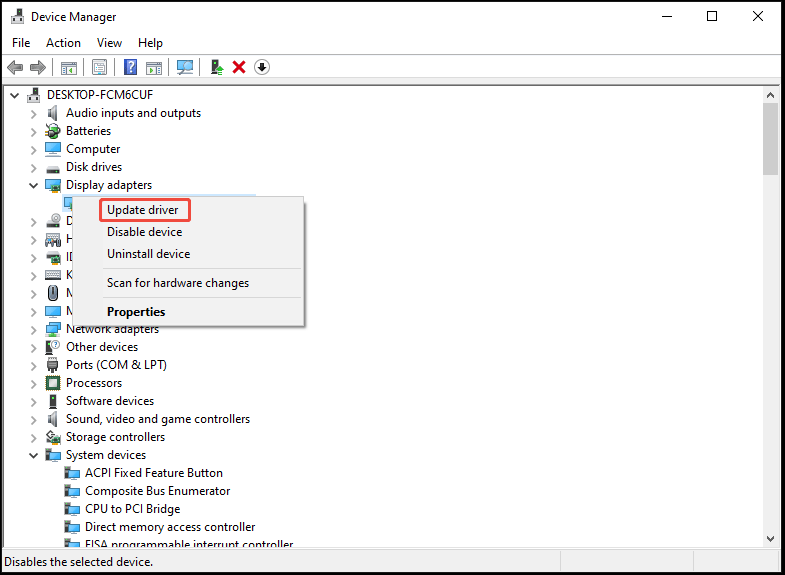
Step 3: Hit Search automatically for drivers. Then, Windows will search your computer for the best available driver and install it.
Once updated, check if you still experience BSOD attempted write to readonly memory/0x000000BE.
Uninstall Driver
If this cannot work, right-click on that driver and select Uninstall device to uninstall that driver.
Try to roll back the driver if updating or uninstalling does not help.
Step 1: Right-click the driver and choose Properties.
Step 2: In the new window, hit Roll Back Driver.
Uninstall Recent Programs
Attempted to write to readonly memory BSOD can appear after installing some programs. Those programs may conflict with Windows 11, 10, or 7.
Try to uninstall the recent software via these steps:
Step 1: In Windows Search, type Control Panel, and press Enter to open this app.
Step 2: Set the view mode to Category. Then, click the Uninstall a program link under Programs.

Step 3: In the app list, right-click on the recently installed application, and choose Uninstall. Finish the uninstallation by following the on-screen prompts.
Do the same thing for all the recent programs.
Upon app installation, restart the system and see if the stop code persists.
Perform a system restore
Windows automatically creates restore points for system protection before some significant events. Or, you create a restore point manually before installing a new Windows update, driver, or app.
If the restore points are created before the BSOD attempted write to readonly memory, it is possible to restore the PC to a previous state.
To do that in Windows 11/10/7:
Step 1: Open Control Panel and set View by to Large icons.
Step 2: Click Recovery > Open System Restore and hit Next to continue.
Step 3: Pick a restore point from the list depending on the creation time.
Step 4: Finally, click Finish > Yes to begin the restoring process.

Run SFC
Windows system files can be damaged or missing due to corruption or accidental deletion, causing BSOD 0x000000BE or attempted_write_to_readonly_memory. Repairing system files may fix the problems.
To do this thing, run System File Checker, also known as SFC. It scans for corrupted, modified, or damaged system files and replaces them with cached copies.
Step 1: Input cmd into Windows Search and run it as administrator in Windows 11/10/7.
Step 2: Type sfc /scannow and press Enter to begin verification.
Wait patiently until the scan 100% finishes.
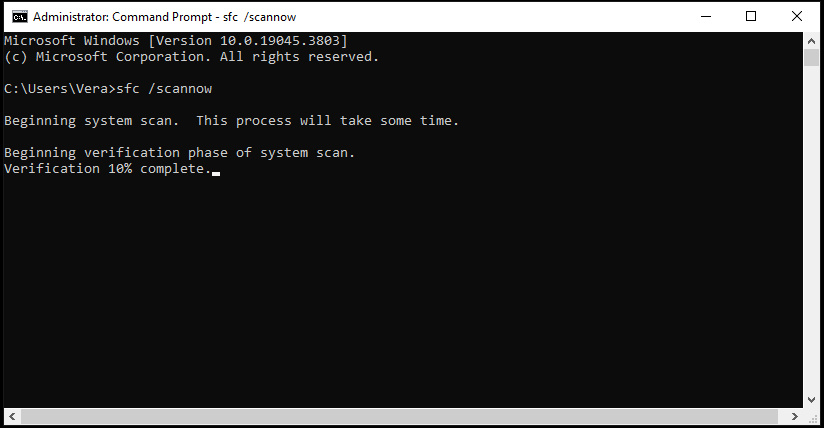
Step 3: Additionally, perform a DISM scan.
Just execute the dism /online /cleanup-image /restorehealth command to scan and repair corruption in the Windows system image.
After the scan, the system may function normally without triggering a BSOD.
Update BIOS
Incompatible or outdated BIOS firmware may be a culprit that results in the occurrence of attempted to write to readonly memory. To address it, update the BIOS to a new version.
However, this is not something that everyone can do since it requires technical skills.
If you have some computer knowledge, perform a BIOS update via these steps.
Step 1: Connect a USB flash drive to a working computer.
Step 2: Access the website of your manufacturer and download the latest BIOS version.
Step 3: Copy the BIOS update files to a USB drive.
Step 4: Plug the USB drive into the non-working PC. Enter the BIOS menu, find the update feature, and choose the downloaded file to run the update.
If you are a beginner, take the computer to a professional to seek help.
Run Memory Diagnostic
The BSOD stop code attempted_write_to_readonly_memory of 0x000000BE may be related to the memory. Running a memory diagnosis can be the best choice.
We suggest running Windows Memory Diagnostic to run this task. This tool is built into the operating system to help test your PC’s RAM for errors. These errors may cause blue screen errors and system crashes.
Here is how to conduct a memory test:
Step 1: Press Win + R on the keyboard to open Run.
Step 2: Type mdsched.exe and click OK to open Windows Memory Diagnostic.
Step 3: Perform the check at once by hitting Restart now and check for problems.
Step 4: The tool is checking for memory problems.

Step 5: After the test finishes, the PC will restart automatically. Since the system fails to boot due to a BSOD, you should enter Safe Mode to view the test results.
- Open Event Viewer via the Search box.
- Navigate to Windows Logs > System.
- Hit Find on the right side to look for the events regarding memory diagnostics.
For a deeper scan, we recommend using the third-party tool, MemTest86.
Once some errors are found, this means there is a problem with your RAM. Just verify the RAM installation to see if it is seated properly, and if you use the correct slots. If needed, replace the faulty RAM.
Further Tip: Attempted Write to Readonly Memory PUBG
You may suffer from a specific situation: every time you launch PUBG, it gives a blue screen to say attempted write to readonly memory or 0x000000BE.
According to users from Reddit, the issue may happen due to a faulty RAM stick, an outdated BIOS, and Fanatec pedals and wheels.
To fix the BSOD error, you can update the BIOS and check RAM errors, then replace the RAM. Do these two things by following the above instructions.
Besides, unplugging Fanatec pedals & wheels and uninstalling Fanatec software (via Control Panel) works.
Suggestion: Back up System
After fixing the blue screen error, your PC should start up correctly. Next up, backing up the PC is a good option.
BSOD errors often happen, making you very annoyed. And you need to spend a lot of time looking for solutions. To restore the computer quickly in case of system crashes, a system backup is crucial.
In terms of Windows backup, MiniTool ShadowMaker comes in handy. This backup software works well in Windows 11/10/8/7, focusing on system/partition/disk/folder/file backup and recovery.
Take the steps below to create a system image:
Step 1: Connect an external hard drive or USB drive to your computer.
Step 2: Download, install, and launch MiniTool ShadowMaker.
MiniTool ShadowMaker TrialClick to Download100%Clean & Safe
Step 3: In Backup, this backup software automatically chooses the Windows partitions as the backup source. You only need to choose the connected external drive or USB drive as the backup target under DESTINATION.
Step 4: At last, hit Back Up Now.
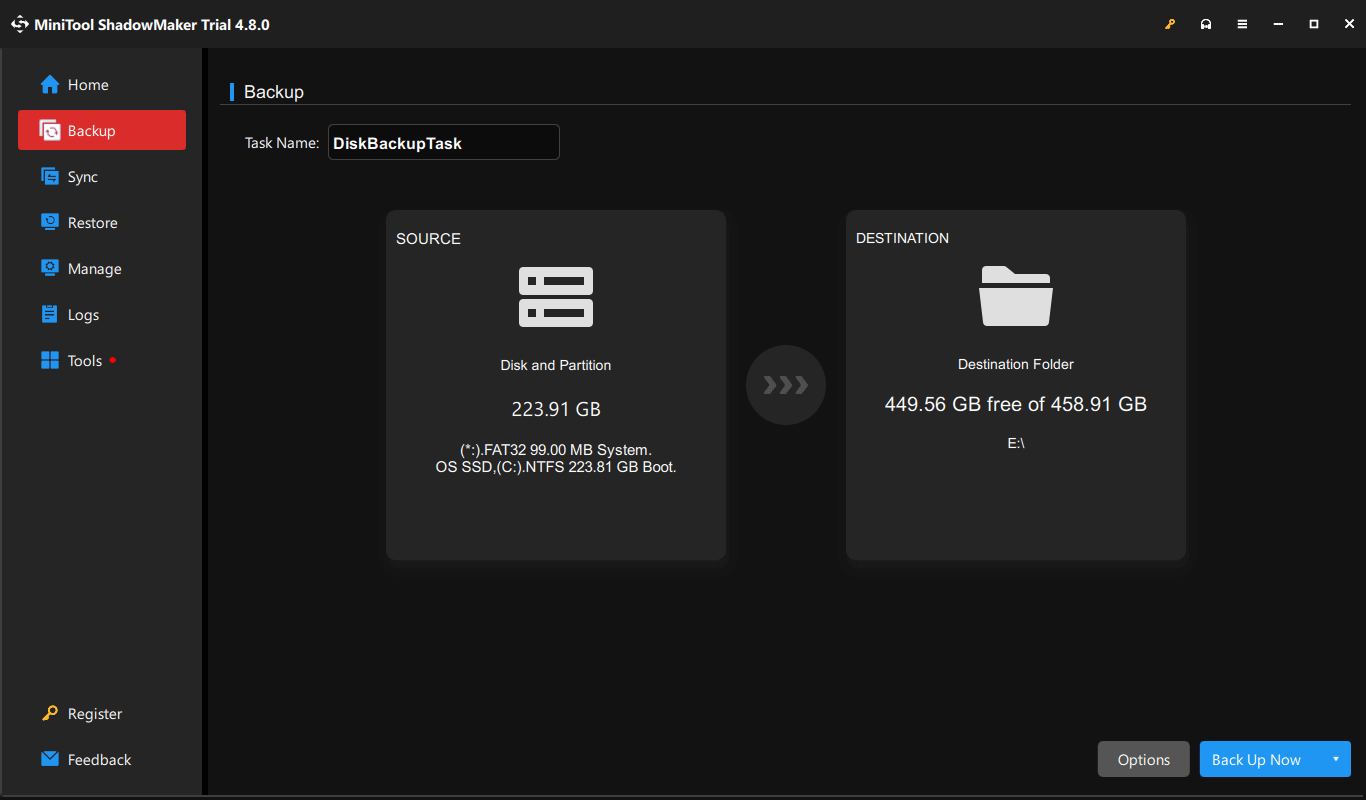
The End
Are you experiencing attempted_write_to_readonly_memory or BSOD 0x000000BE during Windows 11/10/7 startup? Take it easy! Trying the fixes above can easily and effectively solve your issue.
Besides, it is smart to create a system backup for your PC after fixing the BSOD error.
Attempted Write to Readonly Memory FAQ
1. Update Windows
2. Repair system files
3. Run CHKDSK
4. Run Windows Memory Diagnostic
5. Uninstall recent software
6. Update drivers
1. Update drivers
2. Update Windows
3. Run SFC
4. Check RAM
5. Uninstall recent software or drivers
6. Check BIOS/UEFI settings
7. Run System Restore
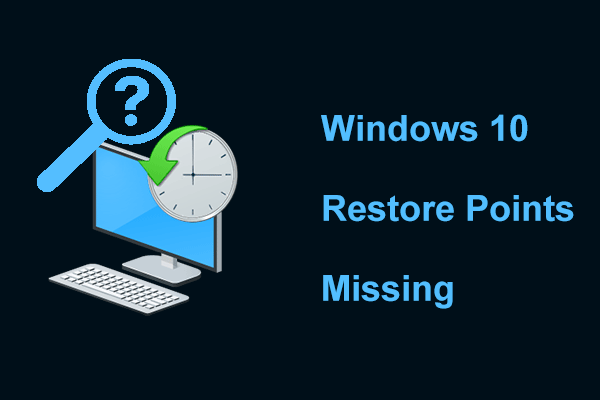

User Comments :